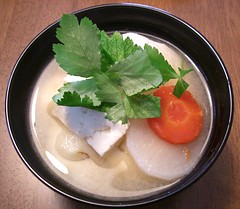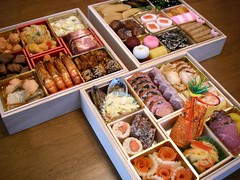
There are several kind of citrus in Japan.
Yuzu is a winter citrus for us, we don't eat this itself.
We use it just for one of a cooking ingredient.
Yuzu gives a slightly sweet and tender flavor as pickles.
It's really easy to make this sweet pickles.
Mostly Japanese people eat this as side dish for rice.
If you buy its completed product at supermarket, it is little expensive.
At the season of Yuzu, I made this by myself and eat as much as everybody pleases!
- Japanese white radish(Daikon) 1lb
- 4 whole Yusu juice
- Yuzu peel
- Sugar 10tble spoon (About 3oz)
- Salt 1.5 tble spoon
- Kombu Seaweed for broth 2 inch square
It might be difficult to get fresh Yuzu outside Japan, then there's bottled Yuzu juice.
I hope you find the one Japanese gourmet shop. Komb (Seaweed) for broth as well.
Kombu (Seaweed) for broth is also used for Miso soup broth or make another side dishes.
----------------------------------------------------------------------------------
Peel Japanese white radish skin and cut.
Peel 2-3 of Yuzu peel. Just peel yellow part of Yuzu peel.
White part of skin make the pickles bitter.
Wet Kombu Seaweed for broth and cut it to thin slices.
Combine all ingredients in Ziploc bag.
Rub this bag for about 30 secnd to mix all the ingredients.
Leave one night(6 -8 hours) in refrigerator.
White radish juice the water by salt and komb Seaweed for broth gives the water thick or sticky, but don't surprise it! This bring out the full flavor as broth.
----------------------------------------------------------------------------------
Hope you enjoy this recipe.




